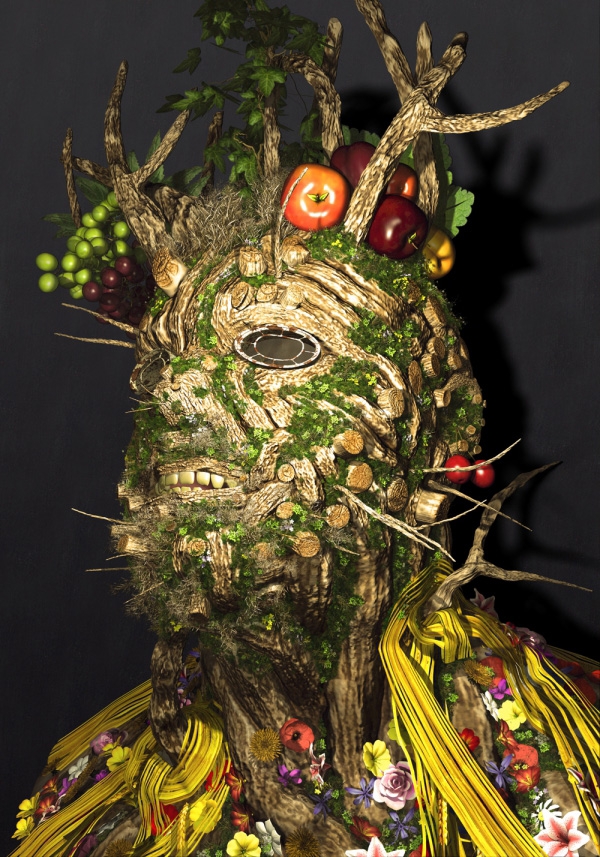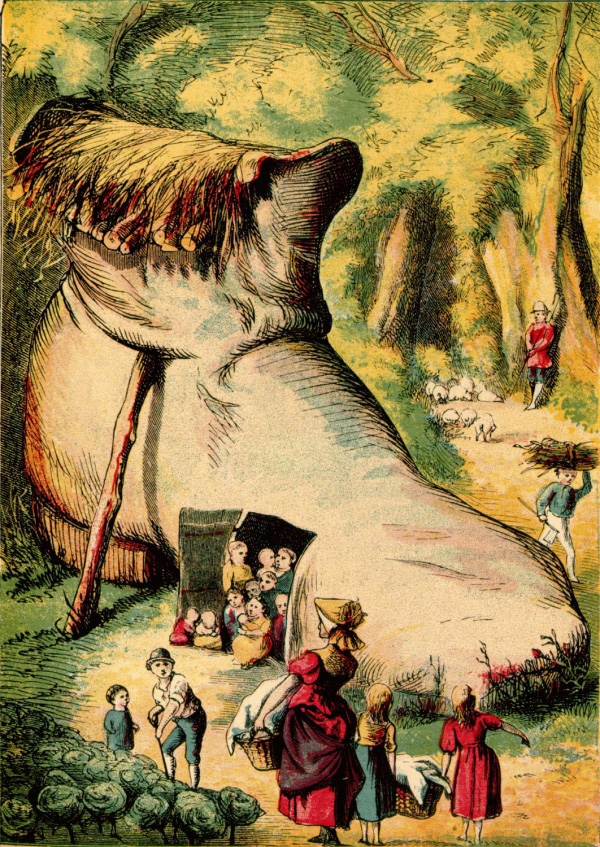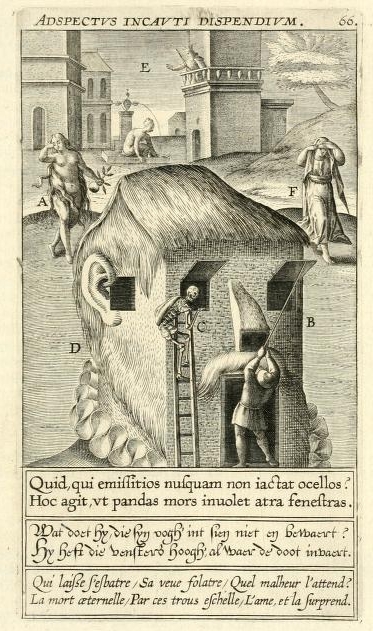'Twas All in My Head
Reflections (and Frustrations)

4 Seasons, Devin Jernigan, digital image, 2017
Why can’t a building look like my head? Why is "taking on human characteristics" forbidden in architectural language? For that matter, and to zoom out on the architecture discourse, why is there a roadblock for making architecture by chaining signifiers, like how our mind works? Why wouldn’t architects want to develop buildings based on the thing that admires it? It is incredibly odd that humans making things for humans have an adverse relationship to humans; like an indifference to our bodies by massively reproducing frameworks that work best for steel, concrete, glass, and machines. This refusal of self-reflection by an architect – to discover a personal architecture – seems paradoxically to be also a refusal to step out from collective, Ozian masks. Or is it because there’s a fear that if architecture takes on human characteristics, architects will lose their capacity to make nice with novelty (sadly we all-too-often see it proliferate today by architects with »modern architecture’s technocratic machismo«) What is it about architecture directly relating to the human visage, that makes architects today so afraid, repulsed, and intimidated? From what I can see, there are infinite avenues of research, speculation, and design that could arise from the body and mind we carry around every day. And the architecture of the human and its sophisticated discourse is mostly unknown, yet has long maintained a latency in anthropomorphic art; a significant research area in which architecture seems to be deficient.

Old Woman who lived in a shoe, Joseph Martin Kronheim, 1875
It could be said that anthropomorphism (human characteristics imbued in an nonhuman object) in art and storytelling cultivates myths indispensable to humanity. Consider the Chinese myth about how lightning came to be, a story handed down from generation to generation – here we find a myth that isn’t far from the popular scientific findings for how life on earth began. Bierlein tells a tale about the meaning of myths, "on first reading, the Chinese myth sounds quite primitive. It is anthropomorphic; that is to say, the characters are natural forces personified. The two elements that form lightning are referred to as 'emperors,' and chaos is portrayed in human form." The grandfather’s story is akin to other origin stories. They tell the story of how life began on earth, but these stories also act for something far greater. They become realized through human culture in many other forms, such as fiction, poems, songs, movies, and architecture. Except that for architecture the value of anthropomorphism has been left out, even though it has such a long and illustrious importance throughout history. Simple symbolism has popped up in architecture fairly frequently, from the fairy tale of the old woman that lived in a shoe, to Robert Venturi’s and Denise Scott Brown’s Duck, the gardens of Bormarzo ("The Monster Park"), and Gehry’s and Oldenberg’s Chiat/Day building (notice how the architect was not allowed to make the binoculars; it had to come from an artist). But you have to look hard, long ago, and in another cultural context, to find the anthropomorphism in architecture; for instance the Adspectus Incauti Dispendium (The Cost of Careless Looking) by Jan David in 1601, a woodblock print title page showing a medieval town with "a house in the shape of a head, with a skeleton climbing up a ladder through a window, and is accompanied by captions in Latin, Flemish, and French."

Adspectus incauti dispendium (The cost of an unprotected gaze), Theodoor Galle, 1603
To me, Jan David’s head-house is much more than allusive and symbolic, it is a weird building, never before allowed in architecture. It is also an anomaly in the urban fabric, a singularity of irony and specimen from a dreamland that. . .
Read the rest of the essay at: Akademie Scloss Solitude's Schlosspost
Read the rest of the essay at: Akademie Scloss Solitude's Schlosspost